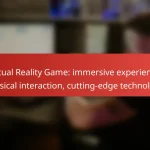In the competitive landscape of horror games, effective pricing strategies are crucial for maximizing revenue and attracting a diverse audience. By employing tiered pricing models and psychological pricing techniques, developers can cater to varying consumer demands. Additionally, bundled offers enhance perceived value, encouraging players to explore more titles, while seasonal sales capitalize on key events to drive engagement and urgency around new releases.

What are effective pricing strategies for horror games in the UK?
Effective pricing strategies for horror games in the UK involve understanding consumer demand, utilizing tiered pricing models, and applying psychological pricing techniques. These approaches can help maximize revenue while appealing to a diverse audience of gamers.
Dynamic pricing based on demand
Dynamic pricing adjusts the price of horror games based on real-time demand and market conditions. For instance, during peak gaming seasons or when a highly anticipated title is released, prices may increase to capitalize on heightened interest.
Consider using data analytics to monitor sales trends and player engagement. This can help you identify optimal pricing points, allowing you to adjust prices quickly to match demand fluctuations. For example, a game priced at £30 may rise to £40 during Halloween when interest in horror games spikes.
Tiered pricing models
Tiered pricing models offer different levels of content or features at varying price points. This strategy allows players to choose a package that best fits their budget and gaming preferences. For example, a basic version of a horror game could be priced at £20, while a deluxe edition with additional content might be available for £40.
Implementing tiered pricing can attract a wider audience, from casual gamers to hardcore fans. Ensure that each tier provides clear value to justify the price difference, such as exclusive in-game items or early access to new content.
Psychological pricing techniques
Psychological pricing techniques leverage consumer behavior to influence purchasing decisions. Common strategies include pricing a horror game at £29.99 instead of £30, which can make the price seem significantly lower and more appealing.
Another technique is to create a sense of urgency through limited-time offers or discounts. For example, promoting a horror game at a reduced price of £25 for the first week after launch can encourage immediate purchases. Be mindful of how these strategies align with your overall brand image and market positioning.
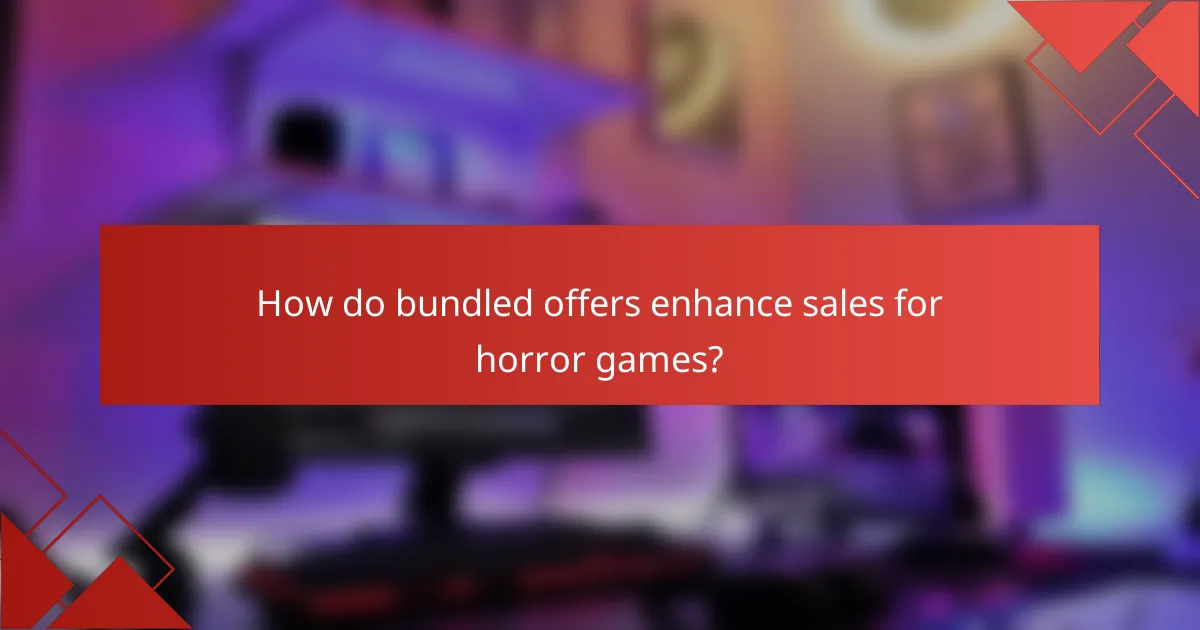
How do bundled offers enhance sales for horror games?
Bundled offers significantly boost sales for horror games by providing consumers with perceived value and an incentive to purchase multiple titles at a reduced price. This strategy not only attracts new players but also encourages existing fans to explore more content within the genre.
Value perception through bundles
Value perception is crucial in the gaming market, especially for horror games that may have niche audiences. Bundling allows consumers to feel they are getting more for their money, often leading to increased sales. For example, a bundle that includes a popular horror title alongside lesser-known games can entice buyers who might not have considered the additional titles.
Offering bundles at a discount, such as 20-30% off the total price, can further enhance this perception. Players are more likely to take the plunge when they believe they are saving money while expanding their gaming library.
Popular horror game bundles
Several popular bundles have emerged in the horror game genre, appealing to various player preferences. For instance, the “Horror Classics Bundle” might include iconic titles like “Resident Evil” and “Silent Hill” at a competitive price. These bundles often rotate during sales events, making them time-sensitive offers that encourage quick purchases.
Seasonal sales, such as Halloween promotions, frequently feature horror game bundles, attracting both new and returning players. These bundles can range from $20 to $50, depending on the number of games included and their individual popularity.
Cross-promotion with merchandise
Cross-promotion with merchandise can enhance the appeal of horror game bundles by creating a more immersive experience for fans. For example, a bundle that includes a game alongside themed merchandise, such as apparel or collectibles, can attract collectors and dedicated fans alike. This strategy not only boosts sales of the games but also increases merchandise visibility.
Retailers can offer exclusive bundles that include both digital and physical items, enhancing the overall value. For instance, a horror game bundle priced at $40 might include a limited edition t-shirt, making it more attractive to consumers looking for unique items.
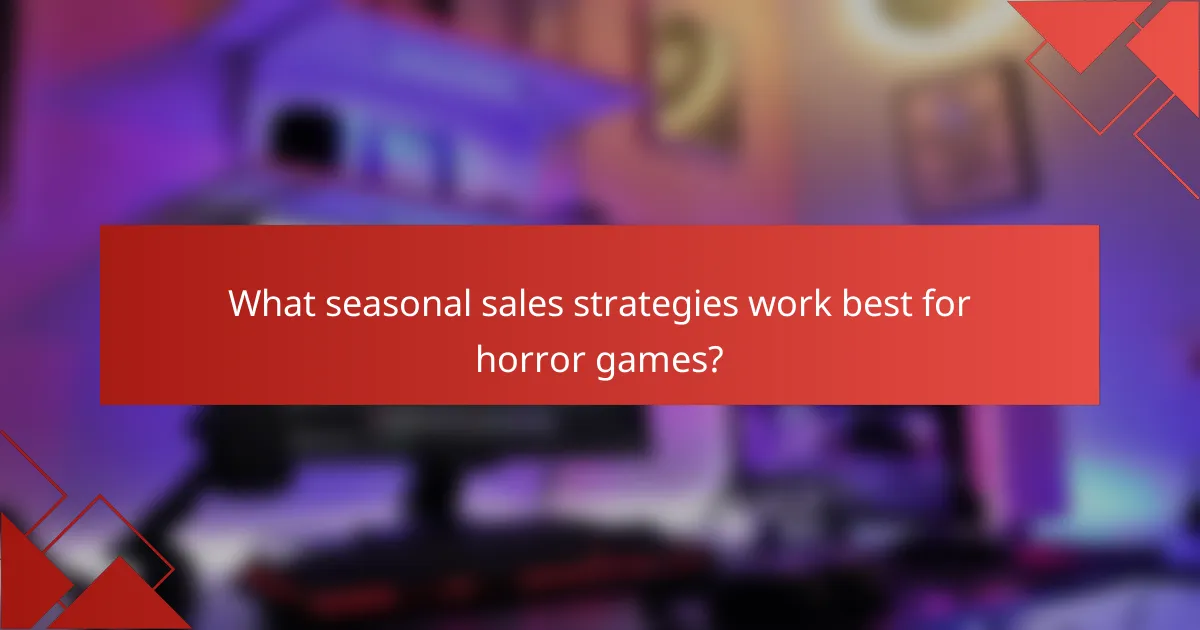
What seasonal sales strategies work best for horror games?
Seasonal sales strategies for horror games often leverage key holidays and events to attract players. Effective promotions can include themed discounts, special bundles, and limited-time offers that create urgency and excitement around new releases.
Halloween-themed promotions
Halloween is the prime season for horror games, making it an ideal time for themed promotions. Developers can offer discounts on popular titles, bundle games with spooky merchandise, or create special editions that include exclusive content.
Consider running a campaign that highlights classic horror titles alongside newer releases. For example, a bundle could feature a classic horror game with its sequel at a reduced price, enticing both new and returning players.
Black Friday discounts
Black Friday presents a significant opportunity for horror game sales, with many consumers looking for deals. Offering substantial discounts, such as 30-50% off, can attract a larger audience and increase sales volume during this shopping frenzy.
To maximize impact, consider creating flash sales or limited-time offers that encourage quick purchases. For instance, a 24-hour deal on a highly anticipated horror game can create urgency and drive immediate sales.
Limited-time offers for new releases
When launching a new horror game, limited-time offers can generate buzz and encourage early adoption. Pricing the game at a lower introductory rate for the first week or offering exclusive in-game items can incentivize players to buy right away.
Additionally, consider bundling the new release with previous titles in the series at a discounted rate. This strategy not only boosts initial sales but also helps familiarize new players with the franchise, potentially leading to future purchases.
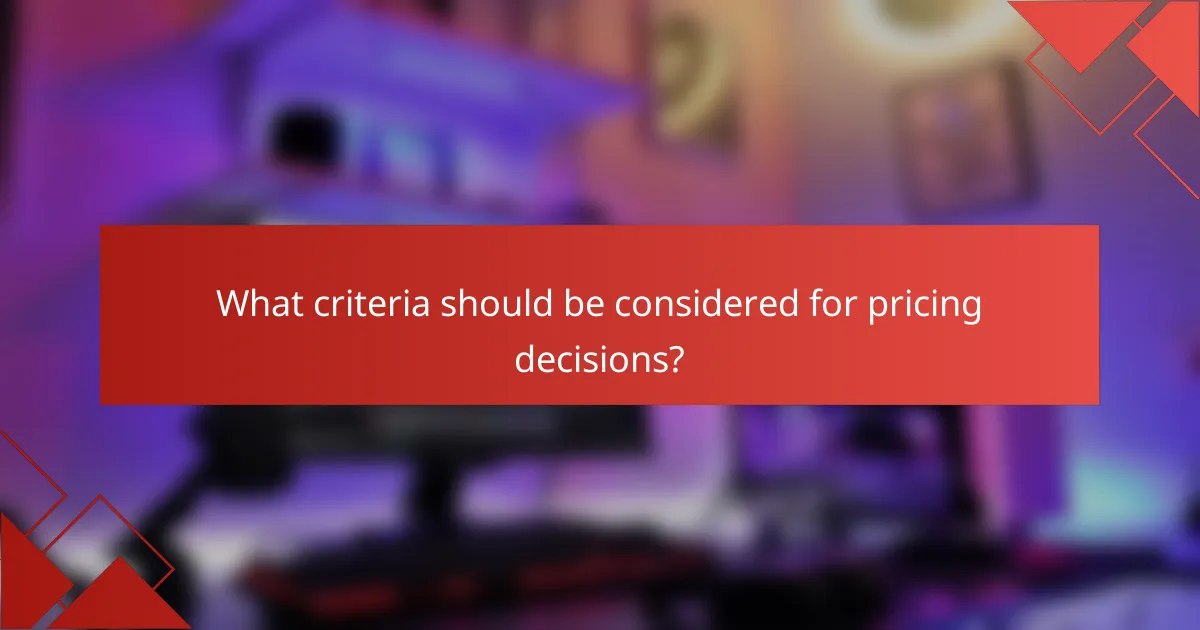
What criteria should be considered for pricing decisions?
Pricing decisions for horror games should consider market trends, production costs, and the target audience’s demographics. These factors help determine a competitive and profitable price point that appeals to players while ensuring financial viability.
Market analysis and competitor pricing
Conducting a thorough market analysis involves examining similar horror games and their pricing strategies. Look at competitors’ price ranges, promotional tactics, and sales performance to identify trends. For instance, if most horror games are priced between $20 and $40, positioning your game within this range can enhance its marketability.
Additionally, consider seasonal pricing strategies, such as discounts during Halloween or special events, which can attract more players. Monitoring competitor sales can provide insights into effective pricing adjustments and promotional opportunities.
Cost of production and development
The cost of production and development is a critical factor in pricing decisions. This includes expenses related to game design, programming, art, sound, and marketing. Understanding your total development costs will help establish a minimum price point to ensure profitability.
For example, if the total cost to develop your horror game is around $100,000, and you anticipate selling 5,000 copies, a price of at least $20 per copy would be necessary to break even. Always factor in additional costs for ongoing support and updates when setting your final price.
Target audience demographics
Identifying your target audience is essential for effective pricing. Consider factors such as age, gaming habits, and spending power. For instance, younger audiences may be more price-sensitive, while dedicated horror fans might be willing to pay a premium for unique experiences.
Surveys and market research can provide valuable insights into your audience’s preferences. Tailoring your pricing strategy to align with their expectations can enhance sales. For example, offering bundled deals or discounts for early adopters can appeal to budget-conscious players while maximizing initial sales.
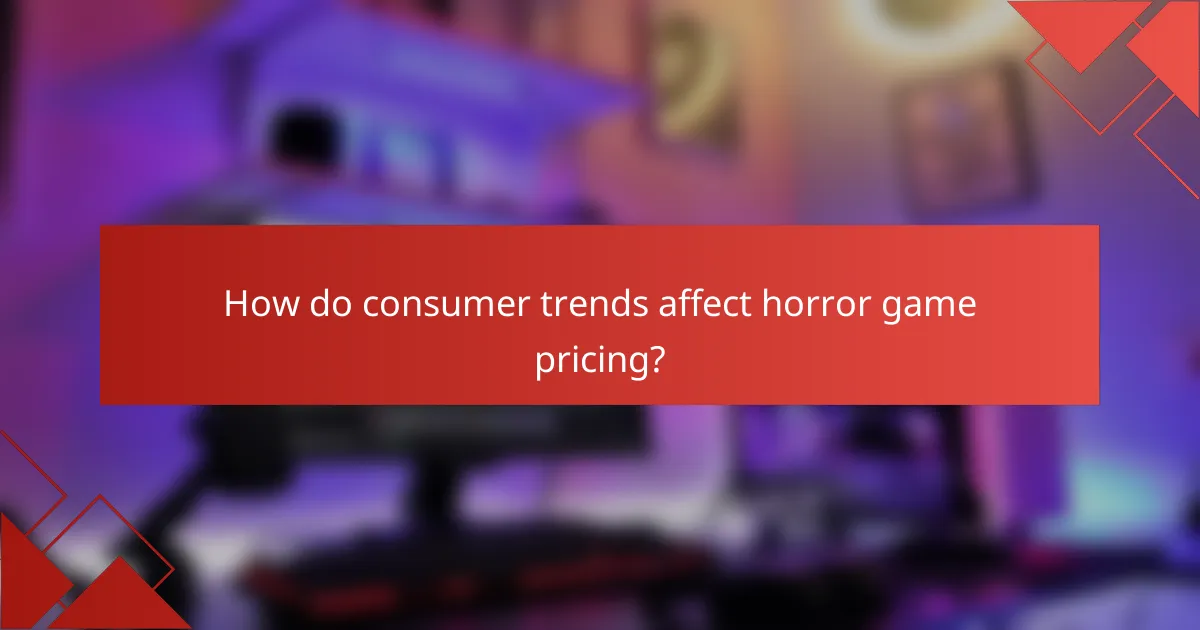
How do consumer trends affect horror game pricing?
Consumer trends significantly influence horror game pricing by dictating how developers and publishers set their prices based on player demand and market dynamics. Understanding these trends helps in crafting effective pricing strategies, including bundled offers and seasonal sales that resonate with players.
Shifts in player preferences
As player preferences evolve, so do the pricing strategies for horror games. For instance, if players increasingly favor immersive experiences over traditional gameplay, developers might adjust prices to reflect the higher production costs associated with creating more complex narratives and graphics.
Additionally, trends such as the rise of cooperative gameplay can lead to bundled offers where multiple games or expansions are sold together at a discounted rate, appealing to players looking for value. This approach can also help in attracting new audiences who may be hesitant to invest in a single title.
Impact of streaming and influencers
The popularity of streaming platforms and influencers has reshaped how horror games are priced. Games that gain traction through streamers can see a surge in sales, prompting developers to adjust prices dynamically based on demand spikes. This often leads to limited-time discounts or promotional offers to capitalize on the increased visibility.
Moreover, influencers can create a sense of urgency around a game release, encouraging developers to implement seasonal sales that align with peak viewing times. For example, a horror game might be offered at a reduced price during Halloween to leverage the heightened interest in the genre during that period.
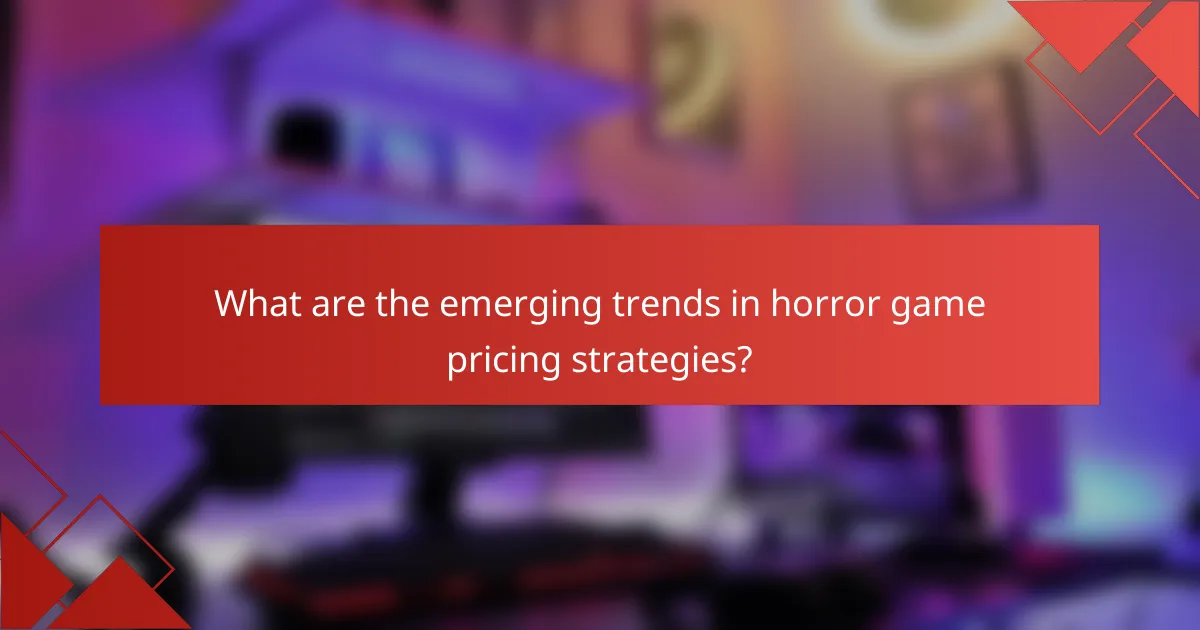
What are the emerging trends in horror game pricing strategies?
Emerging trends in horror game pricing strategies include subscription models, microtransactions, and the integration of virtual reality experiences. These strategies aim to enhance player engagement while maximizing revenue through innovative pricing approaches.
Subscription models for horror games
Subscription models are gaining traction in the horror gaming sector, allowing players to access a library of titles for a monthly fee. This approach can range from around $10 to $15 per month, providing users with a cost-effective way to experience multiple games without the upfront cost of purchasing each title individually.
Developers benefit from a steady revenue stream while players enjoy the flexibility of trying out various horror games. However, it’s crucial to ensure that the subscription service offers a diverse selection to retain subscribers over time.
Microtransactions and in-game purchases
Microtransactions are increasingly common in horror games, enabling players to buy cosmetic items, additional content, or gameplay enhancements. Prices for these purchases can vary widely, often ranging from a few cents to several dollars, depending on the item’s perceived value.
While microtransactions can boost revenue, developers should be cautious about balancing monetization with player satisfaction. Excessive reliance on in-game purchases can lead to negative feedback and diminish the overall gaming experience.
Integration of VR experiences
The integration of virtual reality (VR) experiences in horror games is revolutionizing how players engage with the genre. VR can enhance immersion, making horror experiences more intense and memorable. Pricing for VR horror games typically aligns with traditional titles, often ranging from $20 to $60, depending on the game’s complexity and production quality.
As VR technology becomes more accessible, developers should consider creating exclusive content or experiences that leverage this medium. However, it’s essential to ensure that the VR experience is polished and user-friendly to attract a broader audience.


